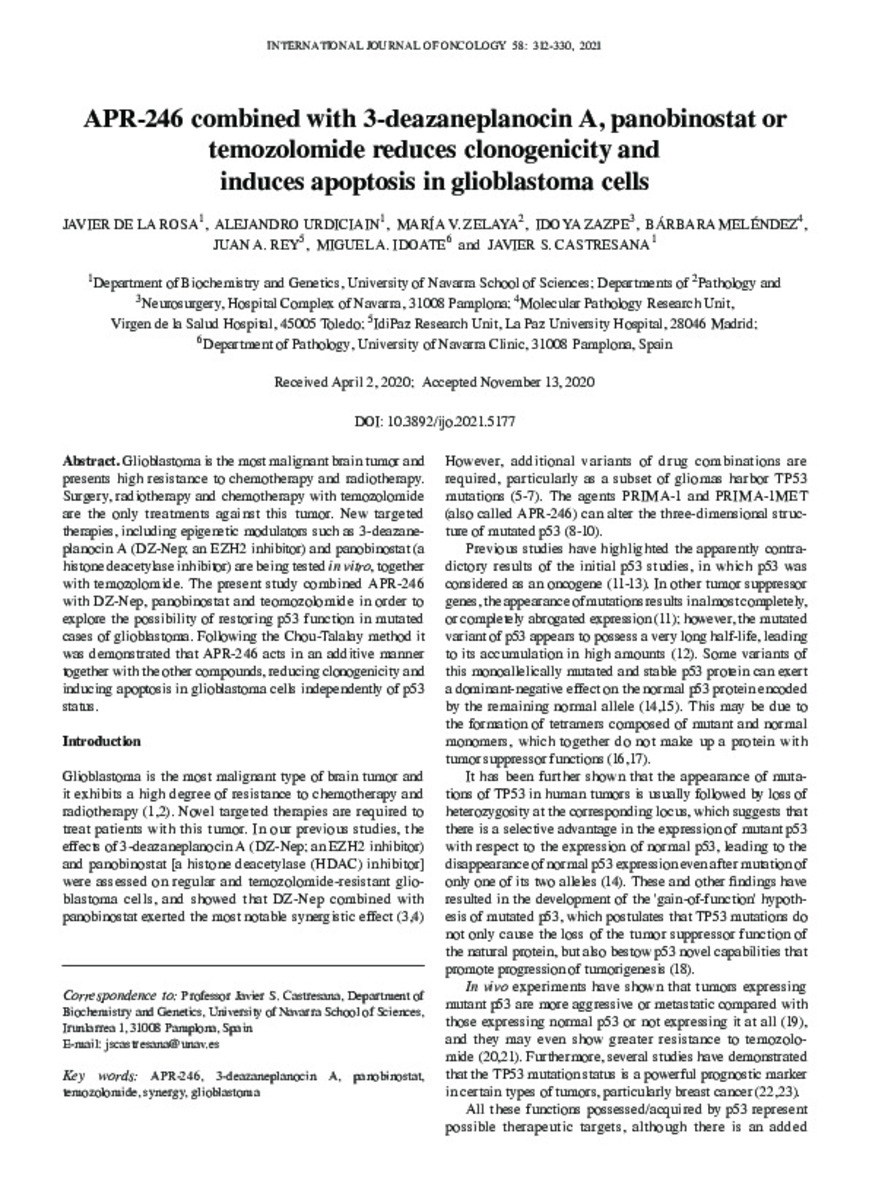APR-246 combined with 3-deazaneplanocin A, panobinostat or temozolomide reduces clonogenicity and induces apoptosis in glioblastoma cells
Keywords:
APR-246
3-deazaneplanocin A
Panobinostat
Temozolomide
Synergy
Glioblastoma
Citation:
De-La-Rosa, J. (Javier); Urdiciain-Ezpeleta, A. (Alejandro); Zelaya, M.V. (María Victoria); et al. "APR-246 combined with 3-deazaneplanocin A, panobinostat or temozolomide reduces clonogenicity and induces apoptosis in glioblastoma cells". International journal of oncology. 58 (3), 2021, 312 - 330
Statistics and impact
0 citas en

0 citas en

Items in Dadun are protected by copyright, with all rights reserved, unless otherwise indicated.









